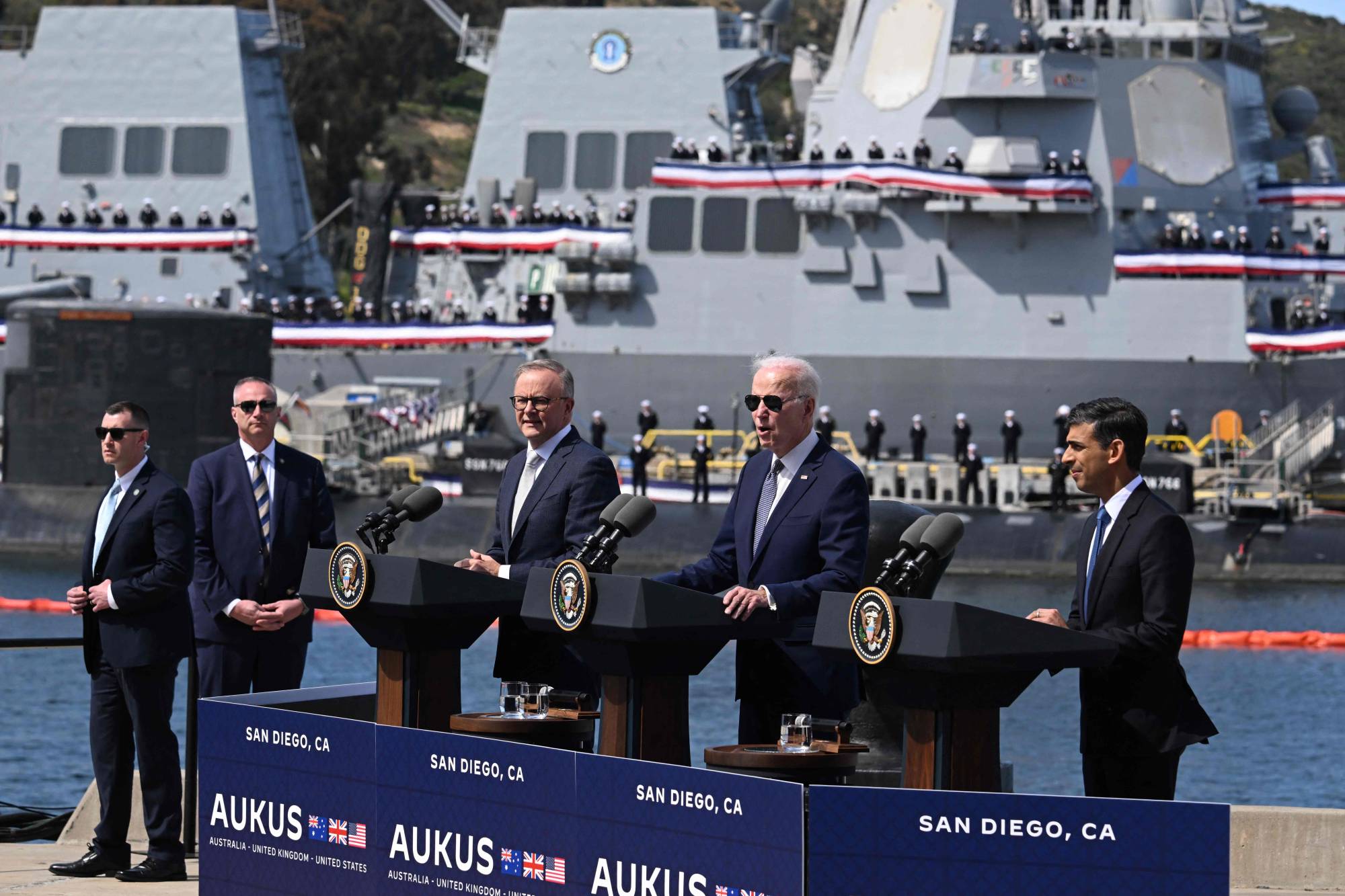The outlines of the Australia-U.K.-U.S. security partnership became clearer this week as the three countries unveiled plans to develop a new fleet of nuclear-powered attack submarines.
The ambitious project is designed to help check China’s growing power in the Indo-Pacific and has, as a result, triggered Beijing’s fury. The submarines are only part of a more wide-ranging security partnership, however, the other elements of which are potentially even more significant.
AUKUS was announced in 2021 as an “enhanced trilateral security partnership.” Its birth was controversial, starting with the renunciation of a deal with France to provide the next generation of Australian submarines. That project was behind schedule and Canberra jumped at the opportunity to acquire nuclear-powered subs, which travel farther, stay underwater longer and are quieter than the diesel model that Paris was building.



















With your current subscription plan you can comment on stories. However, before writing your first comment, please create a display name in the Profile section of your subscriber account page.